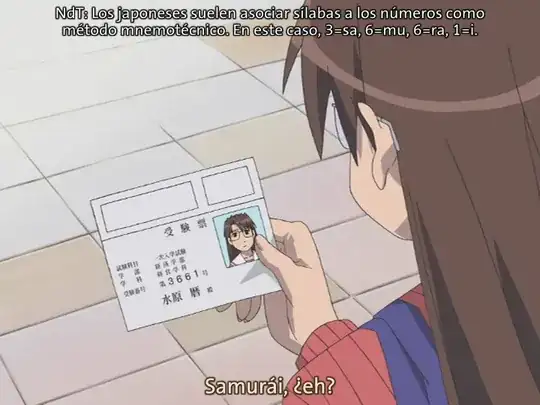Japanese speakers may remember numbers by taking the prominent syllable from how they read numbers (語呂合わせ goroawase). There are more than one way on how to count: one that descended from Old Japanese (大和言葉 Yamato kotoba) and one borrowed from Chinese (漢語 kango). In the order of Yamato / Kango:
- ひとつ hitotsu / いち ichi
- ふたつ futatsu / に ni
- みっつ mittsu / さん san
- よっつ yottsu / し shi
- いつつ itsutsu / ご go
- むっつ muttsu / ろく roku
- ななつ nanatsu / しち shichi
- やっつ yattsu / はち hachi
- ここのつ kokonotsu / きゅう kyū or く ku
- とお tō / じゅう jyū
and so forth. Therefore, a syllable that corresponds to 3 can be either み mi, さ sa, or ざ za (the last being the voiced variation of sa).
For 3661,
- 3 = sa from san
- 6 = mu from muttsu
- 1 = i from ichi
The second 6 requires explanation. Notice that in the list above, "ra" does not appear. In fact, most of the syllables do not have a direct corresponding number, given that there are 48 basic syllables (plus 25 voiced variants and 21 digraphs). To force any given syllable into a number, people use various techniques.
- Use English. つ tsu = 2, せ se = 7, え e = 8
- Use modern Chinese. す su = 4 (written sì in pinyin but sounds like su), り ri = liù = 6
- Swap vowels. This is what happened to the second 6 in 3661. Of all the syllables in the ra-line (ra, ri, ru, re, ro), only re (0 from rei) and ro (6 from roku) are defined. The Chinese technique also suggests 6 for ri. Therefore, 6 may be extended to ra and ru also. (The same thing happens in the ko/go-line where 5 fills in for ka/ga and ke/ge; and in the ma-line where 6 fills in for me and mo.)
An example of this extended list can be found at http://www2u.biglobe.ne.jp/~b-jack/kouza/s-3.html
With these techniques in play, people might remember the first 30 digits of pi as follows:
San ishi ikoku ni mukau. Sango yaku naku,
3 . 1 4 15 9 2 6 5 3 5 8 9 7 9
Obstetrician goes to a foreign country. No misfortune after birth,
sanpu miyashiro ni. Mushi sanzan yami ni naku.
3 6 3 8 4 6 2 6 4 3 3 8 3 2 7 9
the new mother heads to a shrine. Insects chirp in the darkness severely.
